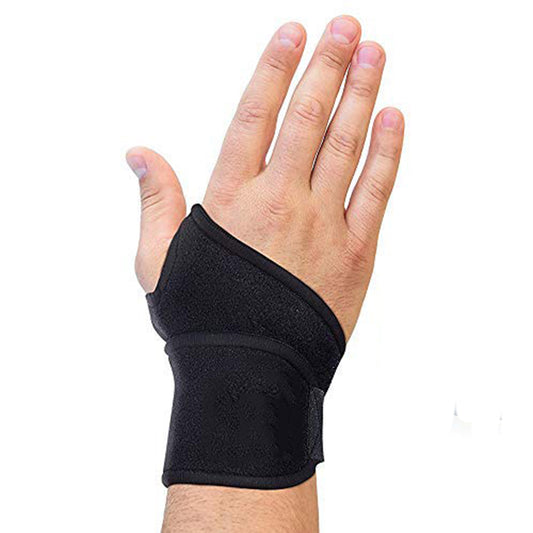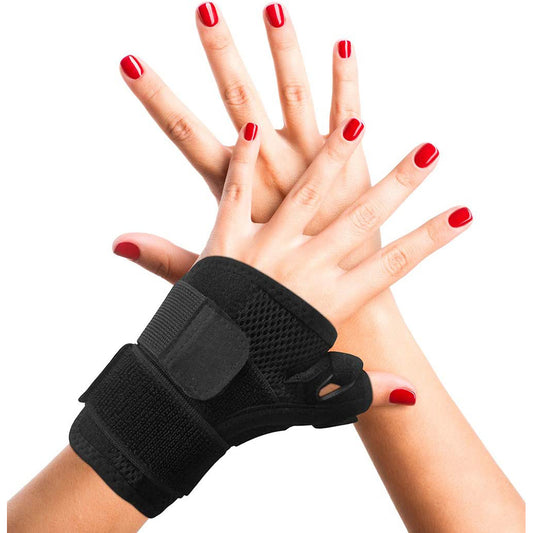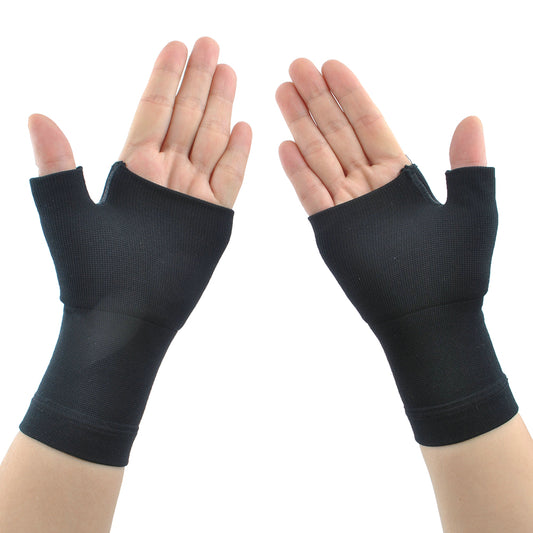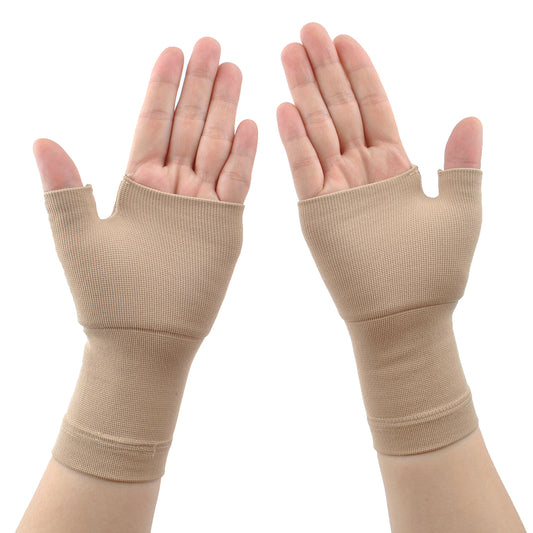-
Carpal Tunnel Wrist Brace Night & Wrist Support & Sleep Brace Fully Adjustable
Regular price $17.99 USDRegular price$25.99 USDSale price $17.99 USDSale -
Premium Lined Wrist support /Wrist Strap/Carpal Tunnel Wrist Brace/ Arthritis Hand Support -Fits Both Hands-Adjustable Fitted
Regular price $12.99 USDRegular price$20.99 USDSale price $12.99 USDSale -
Thumb Brace - Thumb Spica Splint for Arthritis, Tendonitis and More. Fits Both Right Hand and Left Hand for Men and Women. Trigger Thumb Support Braces
Regular price $22.00 USDRegular price$32.00 USDSale price $22.00 USDSale -
Compression Wrist Support - Wrist Sleeve for Wrist Pain, Carpal Tunnel - Wrist Brace
Regular price $18.99 USDRegular price$26.99 USDSale price $18.99 USDSale -
Wrist and Thumb Support - Compression Hand Sleeves- Lightweight, Breathable- Relieve Strains, Sprains, Instability, Arthritic Wrists
Regular price $18.99 USDRegular price$18.99 USDSale price $18.99 USD
Collection: Wrist Brace : Support for Injury Prevention and Recovery
Discover the Comprehensive Benefits of Our Wrist Brace Collection
Welcome to our expertly curated Wrist Brace Collection! Whether you're an athlete, a desk worker, or someone dealing with wrist pain, our wide range of wrist braces offers excellent protection, support, and relief. With the guidance of the ZSZBACE brand's extensive expertise, our products are crafted from high-quality materials designed to provide you with the necessary support while ensuring comfort and durability.
Who Needs Wrist Braces?
Athletes
- Prevention: Athletes often use wrist braces to prevent injuries associated with high-impact sports and repetitive stress activities.
- Recovery: Essential for those recovering from sports injuries, ensuring safe and speedy recovery.
Desk Workers
- Carpal Tunnel Syndrome: Those working long hours on keyboards may develop carpal tunnel syndrome. A wrist brace can provide relief by reducing strain on nerves.
- Repetitive Strain Injuries (RSIs): Helps in managing pain from prolonged repetitive movements.
Why You Need This Product
- Injury Prevention: Our wrist braces help prevent hyperextension and repetitive motion injuries, crucial for athletes and manual laborers.
- Pain Relief: Supports conditions like tendonitis, arthritis, and carpal tunnel syndrome.
- Post-Injury Support: Essential for proper recovery post sprain.
For more specific needs, such as a fully adjustable wrist brace, explore our specialized products.
How to Tell If You Need a Wrist Brace
- Persistent Wrist Pain: If you frequently experience wrist discomfort, a wrist brace can offer necessary support.
- Difficulty in Manual Tasks: Struggling with daily tasks that involve wrist motion could signify the need for additional support.
- Medical Diagnosis: A professional diagnosis of conditions like arthritis or carpal tunnel syndrome is a strong indicator for wrist brace necessity.
Characteristics of Our Wrist Braces
- Material Quality: Made with breathable, high-quality materials that ensure comfort during prolonged wear.
- Adjustability: Our braces are fully adjustable for a personalized fit, offering enhanced support.
- Versatility: Design suitable for both wrists allows flexibility in usage.
Explore our versatile wrist support sleeve that provides targeted compression for wrist pain relief.
Common Questions About Wrist Braces
What symptoms indicate the need for a wrist brace?
- Swelling and Tenderness: Persistent swelling, pain in the wrist joint, or tenderness may indicate the need for a brace.
- Weakness and Numbness: Symptoms such as unexplained hand weakness or numbness can be alleviated with a brace.
Who should wear wrist braces?
- People with Injury History: Those with previous wrist injuries are often advised to wear braces during activities that involve a risk of re-injury.
- Individuals with Chronic Conditions: Those diagnosed with chronic conditions like arthritis or carpal tunnel are prime candidates for regular use.
Enhance Your Daily Life with a Wrist Brace
Regular use of a wrist brace can significantly improve various aspects of your body’s functionality:
- Improved Grip Strength: Offers stability and balanced support, enhancing grip strength in affected wrists.
- Reduced Swelling: By compressing the wrist, braces help control swelling associated with injuries.
- Enhanced Joint Mobility: Aids in better joint mobility by providing necessary support and limiting unnecessary motion.
For those seeking enhanced joint support, check out our premium lined wrist support that fits both hands for a snug fit.
Why Choose ZSZBACE?
At ZSZBACE, we pride ourselves on our many years of experience in manufacturing and research & development for wrist braces. Our commitment to top-tier materials and professional customer service makes us a trusted choice for all your wrist support needs. Invest in your health with confidence, knowing you're backed by a reliable brand.
Our wrist braces are here to help you maintain an active lifestyle while protecting and supporting your wrists. For technical support or more information, explore our full range of products via our detailed catalog.





